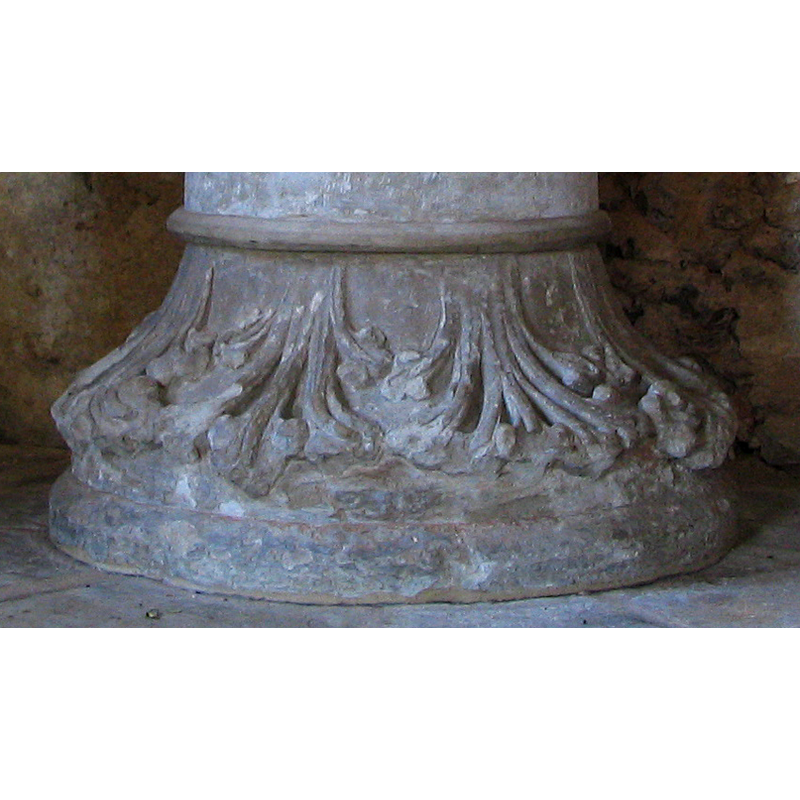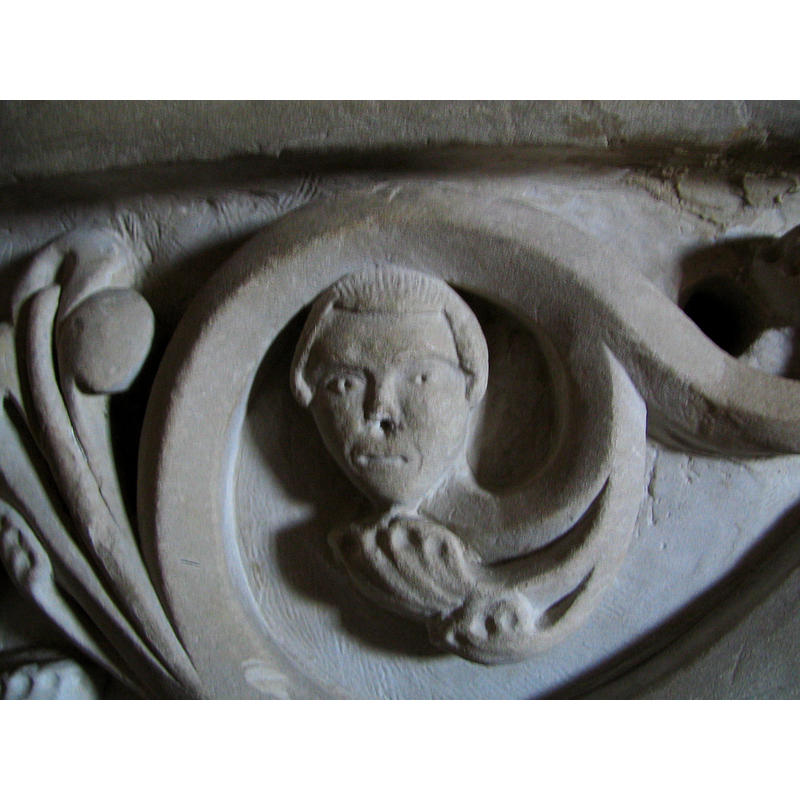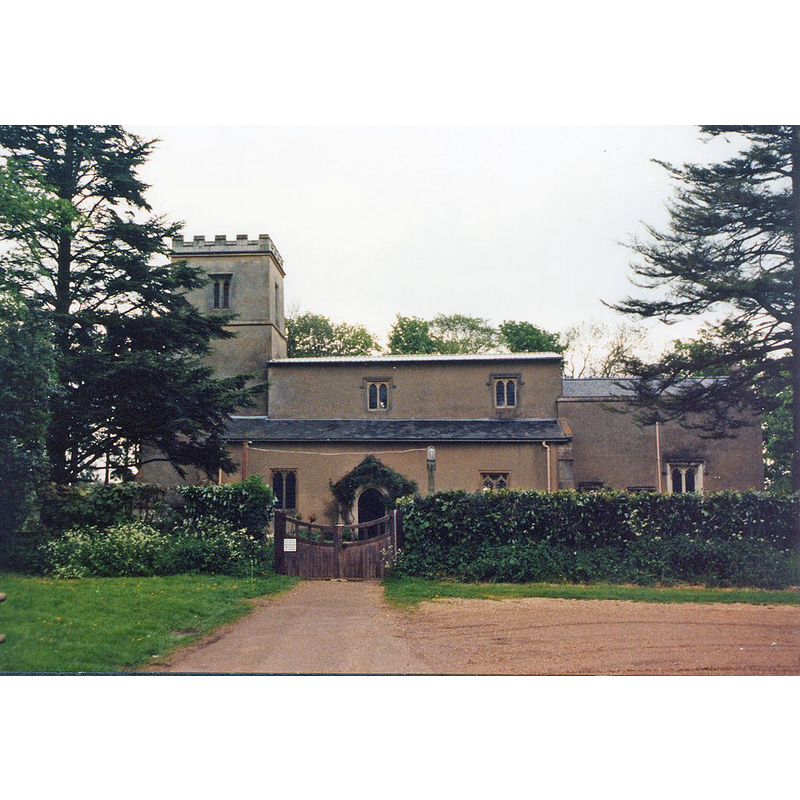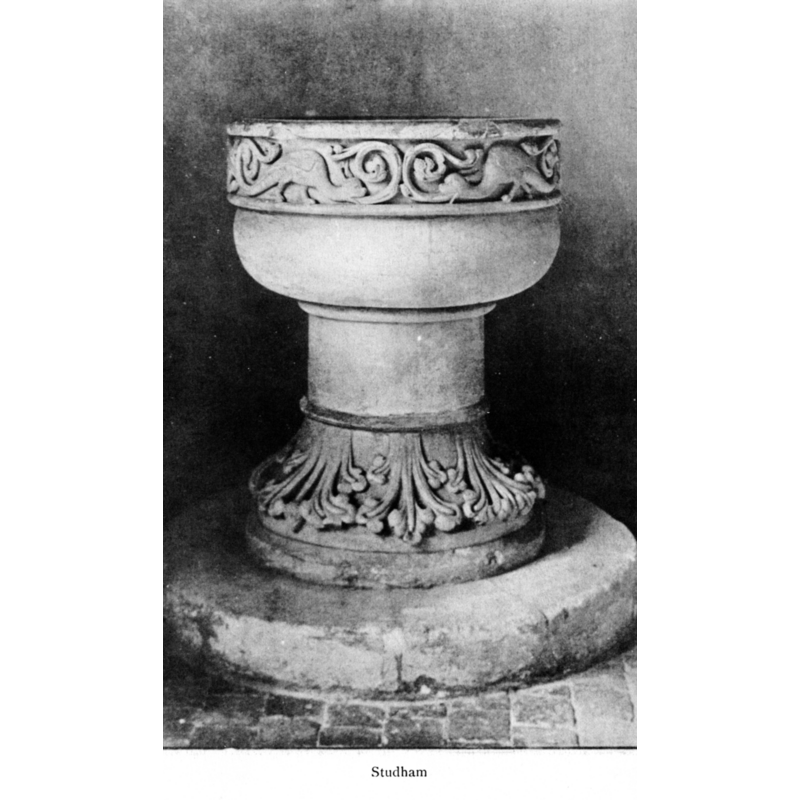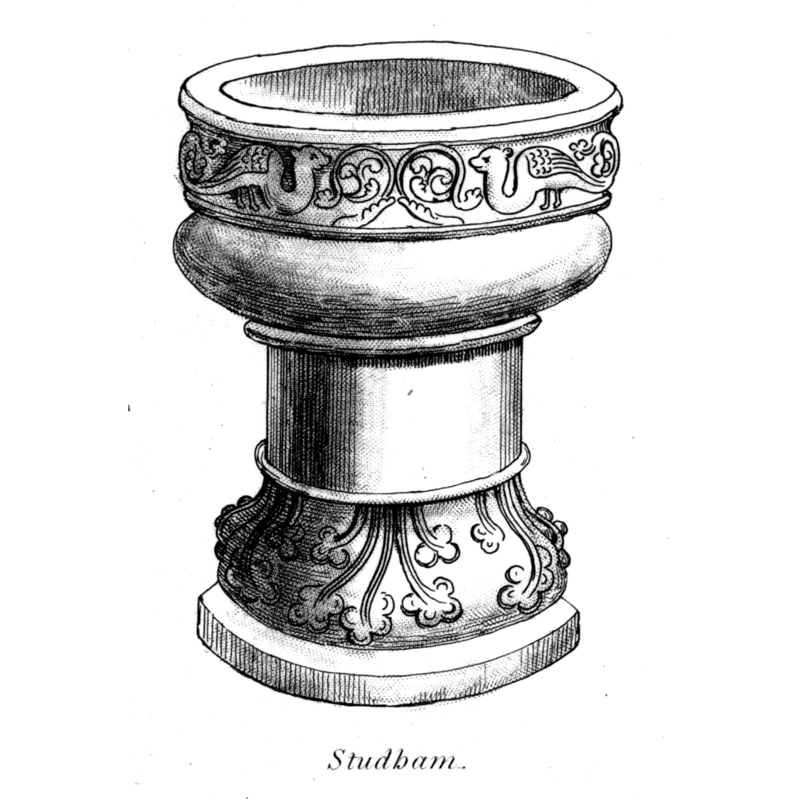Studham / Estodham / Stodham / Stotham

Image copyright © Peter Austin, 2005
Standing permission
Results: 7 records
animal - fabulous animal or monster - dragon - spewing flames from its mouth?
Scene Description: several pairs of facings dragons; each dragon has a tendril or foliage coming out of its mouth; do they represent spewing flames? re-carving
Copyright Statement: Image copyright © Peter Austin, 2005
Image Source: digital photograph taken 31 December 2005 by Peter Austin
Copyright Instructions: Standing permission
design element - motifs - foliage
human figure - head
view of church exterior - south view
view of font
view of font
INFORMATION
FontID: 01246STU
Object Type: Baptismal Font1
Church/Chapel: Parish Church of St. Mary the Virgin [aka Our Lady's]
Church Patron Saints: St. Mary the Virgin
Church Location: Church Road, Studham, Bedfordshire, LU6 2NW
Country Name: England
Location: Bedfordshire, East
Directions to Site: Located 8-10 km WSW of Luton, about the same distance N of Hemel Hampstead [NB: Studham was partly in Herts. until 1897; wholly in Beds. since]
Ecclesiastic Region: Diocese of St. Albans
Historical Region: Hundred of Stanbridge [in Domesday] -- Hundred of Manshead -- formerly in the Hundred of Dacorum, in Hertfordshire
Font Location in Church: Inside the church
Century and Period: 12th - 13th century [restored], Transitional / Early English [altered]
Credit and Acknowledgements: We are grateful to Peter Austin for his photographs of this font. We are also grateful to the Thomas Fisher Rare Books Library for access to the copy of Lysons’ Magna Britannia, and to Jim Ingram, of the Preservation Services, Robarts Library, for the digital imaging of Lysons’ illustrations.
Church Notes: "The first church on this site, built in the time of Abbot Leofstan of St. Albans, may have been of wood, though the terms of the grant of 1064 do not exclude the possibility that it was a masonry building" (VCH, Herts, vol. 2, 1908: 277)
Font Notes:
Click to view
There is an entry for Studham [variant spelling] in the Domesday survey [http://opendomesday.org/place/TL0115/studham/] [accessed 23 September 2015], but it mentions neither cleric nor church in it. Lysons (1806-1833) notes an early baptismal font "ornamented with dragons and foliage" here. The National Gazetteer of 1868 reports "a round stone font of curious workmanship" in this church. Noted in Kelly's Directory of 1898. Described in Cox (1907) as a baptismal font with Transitional period ornamentation. Described and illustrated in Bond (1908) as a baptismal font of the Norman period/style; the basin, cylindrical with a hemispherical underbowl, has a band of high-relief ornamentation around its upper side, a number of dragons (or salamanders?) with single-knoted tails and some very Romanesque scrollwrok [NB: the "scrollwork" looks like tendrils, but could very well be seen as a stylised rendering of flames spewing from the dragons' mouths]; the rest of the bowl is plain, as is the curved underbowl. The upper part of the base is a plain cylindrical column; the lower base splays out and is ornamented with large foliage motif; the whole rests on two circular plinths, the lower wider than the upper. The Victoria County History (Bedfordshire, vol. 3, 1912) notes: "The first church on this site, built in the time of Abbot Leofstan of St. Albans, may have been of wood, though the terms of the grant of 1064 do not exclude the possibility that it was a masonry building; in any case the architectural evidence goes to show that a masonry building was standing here before the 13th-century enlargements. [...] A consecration of Studham Church in 1219 is recorded in the annals of Dunstable, pointing to building here in the early years of the 13th century [...] In the west end of the south aisle the font is placed. This is an unusually fine piece of 13th-century work, with a rather shallow circular bowl, rounded beneath, and having a band of dragons and foliage round the upper part. It rests on a circular stem and spreading base, the latter carved with sprays of trefoiled foliage springing from a necking at the base of the stem and spreading downwards and outwards on the slope of the base." Tyrrell-Green (1928) notes "some exceptionally well-executed conventional foliage upon the base of the font." Pevsner (1968) wonders if the base decorated with "E[arly] E[nglish] stiff-leaf" could be an inverted capital. [NB: the font has been much restored, and the basin may have been totally re-carved or replaced before the 19th century, as the present look is already registed in Lysons' ca. 1806; the only original section appears to be the lower base, with the stiff-leaf decoration]. The CRSBI (2015) notes: "A church had existed at Studham prior to the Conquest as records show that Abbot Leofstan of St Albans was applied to to provide wood to build a church. The Annals of Dunstable record that the church was dedicated in 1219 by Robert Bishop of Lismore"; the CRSBI entry does not mention the font. [cf. Index entry for Barwythe, for a pre-Conquest church that may or may not be related to [the same as?] Studham's]
COORDINATES
Church Latitude & Longitude Decimal: 51.832932, -0.526933
Church Latitude & Longitude DMS: 51° 49′ 58.55″ N, 0° 31′ 36.96″ W
UTM: 30U 670396 5745349
MEDIUM AND MEASUREMENTS
Material: stone, limestone (Purbeck marble)
Number of Pieces: three?
Font Shape: round (mounted)
Basin Interior Shape: round
Basin Exterior Shape: round
REFERENCES
The National Gazetteer: a Topographical Dictionary of the British Isles, London: Virtue & Co., 1868
Victoria County History [online], University of London, 1993-. Accessed: 2011-10-26 00:00:00. URL: https://www.british-history.ac.uk.
Victoria County History [online], University of London, 1993-. Accessed: 2016-09-20 00:00:00. URL: https://www.british-history.ac.uk.
Bond, Francis, Fonts and Font Covers, London: Waterstone, 1985 c1908
Corpus of Romanesque Sculpture in Britain and Ireland, The Corpus of Romanesque Sculpture in Britain and Ireland, The Corpus of Romanesque Sculpture in Britain and Ireland. Accessed: 2015-09-23 00:00:00. URL: http://www.crsbi.ac.uk.
Cox, John Charles, English Church Furniture, New York: E.P. Dutton & Co., 1907
Friar, Stephen, The Sutton Companion to Churches, Thrupp, Stroud (Gloucs.): Sutton Publishing, 2003
Lysons, Daniel, Magna Britannia, being a concise topographical account of the several counties of Great Britain, London: Printed for T. Cadell and W. Davies, 1806-1822
Pevsner, Nikolaus, Bedfordshire and the County of Huntingdon and Peterborough, Harmondsworth: Penguin, 1968
Tyrrell-Green, E., Baptismal Fonts Classified and Illustrated, London: Society for Promoting Christian Knowledge: The Macmillan Co., 1928

